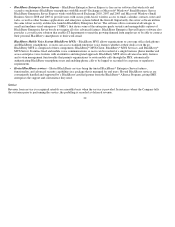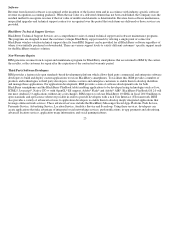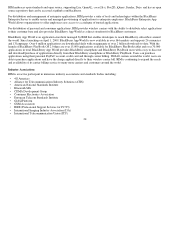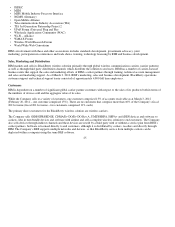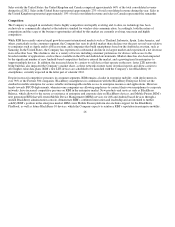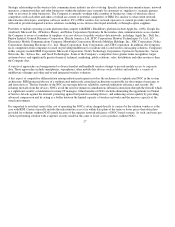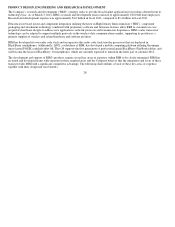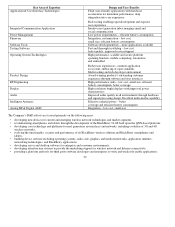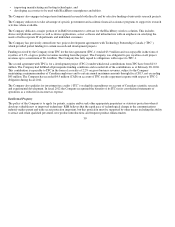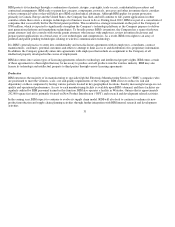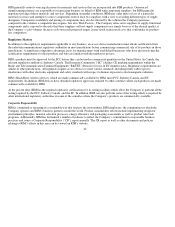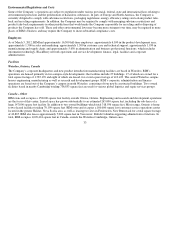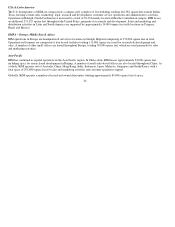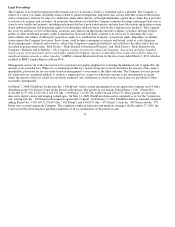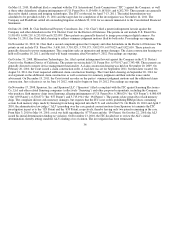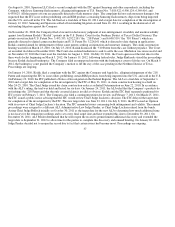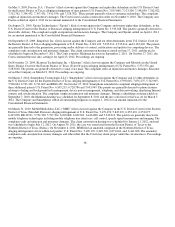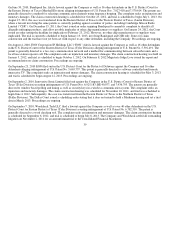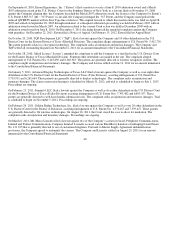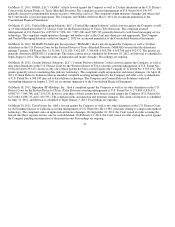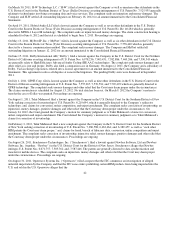Blackberry 2012 Annual Report Download - page 39
Download and view the complete annual report
Please find page 39 of the 2012 Blackberry annual report below. You can navigate through the pages in the report by either clicking on the pages listed below, or by using the keyword search tool below to find specific information within the annual report.
RIM generally controls sourcing decisions for materials and services that are incorporated into RIM products. Outsourced
manufacturing partners are responsible for transacting business on behalf of RIM with component suppliers, but RIM generally
negotiates pricing of these materials and services. Depending on market conditions, RIM may order more or less of a particular
material or service and attempts to source components from at least two suppliers with a view to avoiding different types of supply
disruption. Component availability and pricing of components may also be affected by the volumes the Company generates,
compared to the volumes a competitor may require. See also “Risk Factors - The Company relies on its suppliers to supply functional
components and is exposed to the risks that these suppliers will not supply components on a timely basis or of the desired quality; if
the Company’s sales volumes decrease or do not reach projected targets it may result in increased costs that could make its products
less competitive”.
Regulatory Matters
In addition to the regulatory requirements applicable to any business, an access device manufacturer must obtain certification from
the radio/telecommunications regulatory authorities in most jurisdictions before commencing commercial sale of its products in those
j
urisdictions. A significant competitive advantage exists for manufacturers with established businesses who have previously met the
certification requirements for their products and who are familiar with the regulatory process.
RIM’s products must be approved by the FCC before they can be used in commercial quantities in the United States. In Canada, the
relevant regulatory authority is Industry Canada. The European Community (“EC”) defines CE marking requirements within the
Radio and Telecommunication Terminal Equipment (“R&TTE”) Directive for use in EC member states. Regulatory requirements are
similar in other jurisdictions. All regulators require access devices to meet various standards, including limits with respect to
interference with other electronic equipment and safety standards with respect to human exposure to electromagnetic radiation.
RIM’s BlackBerry wireless devices, which are made commercially available by RIM, meet FCC, Industry Canada, and EC
requirements. In addition, RIM devices have obtained regulatory approvals required by other countries where such products are made
commercially available by RIM.
At the present time, RIM has the required regulatory certifications for its testing facilities which allow the Company to perform all the
testing required by the FCC, Industry Canada, and the EC. In addition, RIM can also perform some of the testing which is required by
other international regulatory authorities in some of the countries where the Company’s products are commercially available.
Corporate Responsibility
RIM is committed to operating in a sustainable way that respects the environment, RIM employees, the communities in which the
Company operates and RIM’s business partners around the world. Product sustainability efforts include implementing design for
environment principles, material selection processes, energy efficiency and packaging assessments as well as product take back
programs. Additionally, RIM has formalized a number of policies to reflect the Company’s commitment to responsible business
practices and issues a Corporate Responsibility (“CR”) report annually. The CR report as well as other documents and policies
relating to RIM’s efforts in this area can be viewed on RIM’s website.
32


